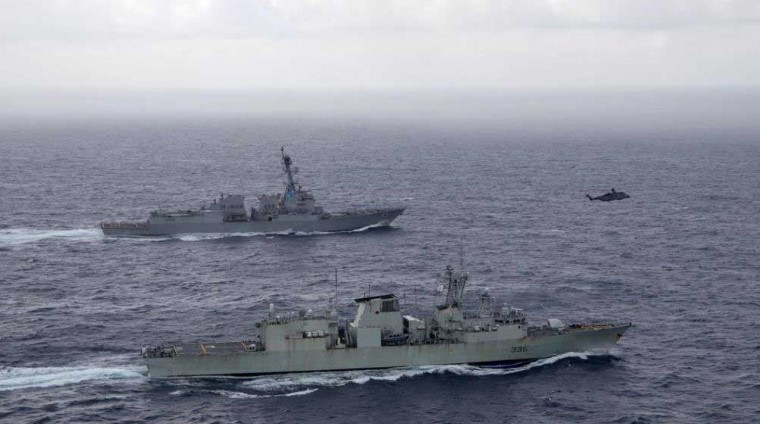Three powerful U.S. Navy Aegis guided-missile warships are moving into the waters off the coast of Venezuela. On Monday, officials said the warships USS Gravely, USS Jason Dunham, and USS Sampson would arrive within 36 hours as part of a large military effort to stop drug trafficking activities linked to criminal cartels in Latin America.
Warships strengthen military presence in the Caribbean
This deployment is not a small operation. Around 4,000 sailors and Marines are being sent to support the mission in the southern Caribbean region. Along with the destroyers, additional assets will include advanced surveillance aircraft, several other naval warships, and even an attack submarine. All of these will operate in international waters and airspace near Venezuela.
The warships and aircraft will carry out intelligence-gathering missions, patrols, and surveillance. Commanders can also use them as bases to launch precise military strikes if they give the orders. The large-scale movement of equipment and personnel shows how seriously the U.S. government is taking the issue of drug trafficking in the region.
Chinese Warships Circle Australia, Raising Security Fears
This type of deployment is logistically complex. It involves coordinating multiple branches of the military, arranging refueling at sea, and setting up communication lines across a vast ocean area. Warships are equipped with advanced radar and missile systems, which allow them to protect other assets while monitoring suspicious activities. Their presence in the Caribbean sends a strong message about the U.S. commitment to tackling organized crime at sea.
Targeting drug cartels
The U.S. has identified major Latin American drug cartels as a global threat. Officials have officially labeled these cartels as international terrorist organizations. Above all, they consider groups such as Mexico’s Sinaloa Cartel and Venezuela’s Tren de Aragua especially dangerous because of their involvement in drug smuggling and organized crime across borders.
Observers have long regarded the southern Caribbean region as a major transit point for drugs moving from South America into North America and Europe. Therefore, by positioning powerful warships, submarines, and aircraft in the area, the U.S. aims to disrupt the operations of these cartels at sea.
Jasen Butler Charged in Massive Scheme to Defraud U S Warships
Recent months have already seen U.S. warships deployed to support border security and anti-drug operations. Now, with the arrival of additional destroyers and the large-scale involvement of sailors and Marines, the operation is expanding significantly. In other words, the mission is growing in both scale and scope. The focus is on gathering intelligence about the cartels’ movements, monitoring suspected routes, and stopping drug shipments before they can reach other regions.
Surveillance aircraft like the P-8 Poseidon, which are part of the mission, can cover vast areas of the sea and track suspicious vessels. For example, these aircraft can detect small boats or submarines that may be used by traffickers. Combined with warships and submarines, they create a strong monitoring and enforcement network.
In addition to surveillance, warships are capable of intercepting vessels at sea. They can launch helicopters to track fast-moving boats, board suspicious ships, and seize illegal cargo. Moreover, with Marines on board, the destroyers are also prepared for security operations if required.
Regional response to U.S. warships
In response to these developments, Venezuelan officials have expressed concern over the increased U.S. military activity near their waters. The Venezuelan leadership has stated that the country will defend its land, seas, and airspace from what it described as foreign threats.
Statements from Venezuela described the U.S. actions as a challenge and referred to them as a sign of hostility. However, the country’s government has not directly commented on the presence of the warships but has criticized what it calls interference by outside powers in the region.
🚨 Pentagon alarm bells ring — U.S. sends 2 of 7 THAAD systems to Israel in missile crisis
As a result, the Caribbean has now become the center of a major military deployment involving thousands of U.S. personnel and advanced equipment. For local communities and regional governments, the increased presence of foreign warships and aircraft certainly represents a new level of tension.
The U.S. has repeatedly emphasized that its focus is on stopping the flow of drugs and targeting cartels that officials view as international criminal organizations. Moreover, the operations will continue for months, with warships, aircraft, and submarines stationed in international waters and skies near Venezuela.

